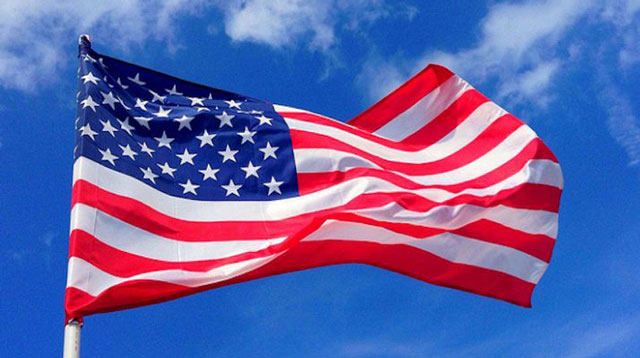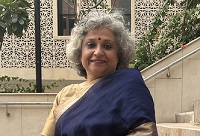
The conundrum of group-based policies for countries riddled with deep-rooted intergroup inequalities
COMMENT | ASHWINI DESHPANDE | Should individuals receive differential treatment based on race, caste, gender, religion, or any other accident of birth? In June 2023, the United States Supreme Court answered this question with a firm “no,” as it struck down affirmative action in higher education. The plaintiffs in the case, Students for Fair Admissions, had sued Harvard College and the University of North Carolina, alleging that their race-conscious admissions policies discriminated against Asian-American applicants.
When countries are riddled with deep-rooted intergroup inequalities, any group-based policy like affirmative action presents a conundrum. Efforts to redress historical discrimination, such as slavery or caste bias, and to promote equal opportunities for marginalised communities are inevitable. But so, too, is the eventual backlash against such policies for perpetuating “reverse discrimination” and protecting their beneficiaries from the rigours of competition.
Inequality of opportunity is not a matter of a country’s wealth. The U.S. is considerably wealthier than India, with a per capita GDP roughly nine times higher in purchasing-power-parity terms. Moreover, 88% of eligible students in the U.S. are enrolled in colleges and universities, compared to only 31% in India. Yet both countries have enacted affirmative action policies.
In the U.S., these policies can be traced back to the 1960s civil-rights movement, which sought to dismantle systemic racism and segregation the legacy of centuries of slavery. Affirmative action was intended to remedy the serious historical discrimination and ongoing disadvantages faced by African Americans, women, and other minorities.
The inclusion of race as a factor in college admissions was always controversial. But it was also repeatedly deemed constitutional – first, in the 1978 case Regents of the University of California v. Bakke (though the Supreme Court did reject strict quotas), and also in later cases, such as Grutter v. Bollinger in 2003. The U.S. Supreme Court’s June decision thus amounted to an overturning of longstanding precedent.
One facet of U.S. college admissions, however, remains unchanged: the legacy advantage. A recent paper showed that children from families in the top 1% of earners are more than twice as likely to attend an Ivy-Plus college (an Ivy League institution, Stanford University, MIT, Duke University, and the University of Chicago) as those from middle-class families with comparable SAT/ACT scores. Attending one of these colleges, instead of a highly selective public university, nearly doubles students’ chances of attending an elite graduate school and triples their chances of working at a prestigious firm. In other words, although affirmative action for African Americans and other minority groups has been abolished, it is alive and well for the rich.
India’s longstanding affirmative action policies are also being eroded. The country’s 1950 constitution formalised the British-era “reservation” policy mandating political, educational, and public-sector-employment quotas for Scheduled Castes (SCs), the official term for Dalits, the least-privileged group in Hinduism’s discriminatory caste system, and Scheduled Tribes (STs), the official term for Adivasis, the country’s indigenous groups. Some of these policies were later extended to Other Backward Classes (OBCs), defined as castes and communities that are socially or educationally “backward” (a non-pejorative term in Indian discourse) but not stigmatised in the same way as SCs and STs.
Conceived as a form of compensatory discrimination, India’s reservation policy targeted all SCs and STs, regardless of economic status, and non-wealthy OBCs (well-off OBCs, whom Indians refer to as the “creamy layer,” were excluded). But in 2019, the authorities announced an additional 10% quota in jobs and education for the Economically Weaker Sections (EWS) of society. To qualify for this quota, families must earn less than ₹800,000 (just under $10,000) per year and cannot be members of SCs, STs, or OBCs. More than 98% of Indians qualify based on this income cut-off.
By focusing solely on economic conditions, rather than marginalisation and discrimination based on social identity, the new EWS quota turned the reservation policy on its head. It was challenged in court for excluding SCs, STs, and OBCs, but in November 2022, India’s Supreme Court upheld the program’s validity. For the first time since India gained independence, disproportionately poor groups – those with the highest percentage of individuals below the poverty line are excluded from a quota that is, in principle, meant to target economic deprivation.
The EWS reservation is presented as being based on economic criteria and not identity. But in reality, it is very much a caste-based quota, specifically targeting groups that do not suffer any discrimination and, in fact, rank the highest on the social scale of ritual purity. The Indian government has effectively created a quota for the upper castes all but the top earners qualify.
Affirmative action policies in the U.S. and India were created to address historical discrimination and promote social justice. Over time, they led to increased representation and opportunities for marginalized communities. But this guiding principle has dimmed considerably, leaving little hope of creating a level playing field in either country.
*****

Ashwini Deshpande is Professor of Economics and Founding Director of the Centre for Economic Data and Analysis (CEDA) at Ashoka University.
Copyright: Project Syndicate, 2023.
 The Independent Uganda: You get the Truth we Pay the Price
The Independent Uganda: You get the Truth we Pay the Price



